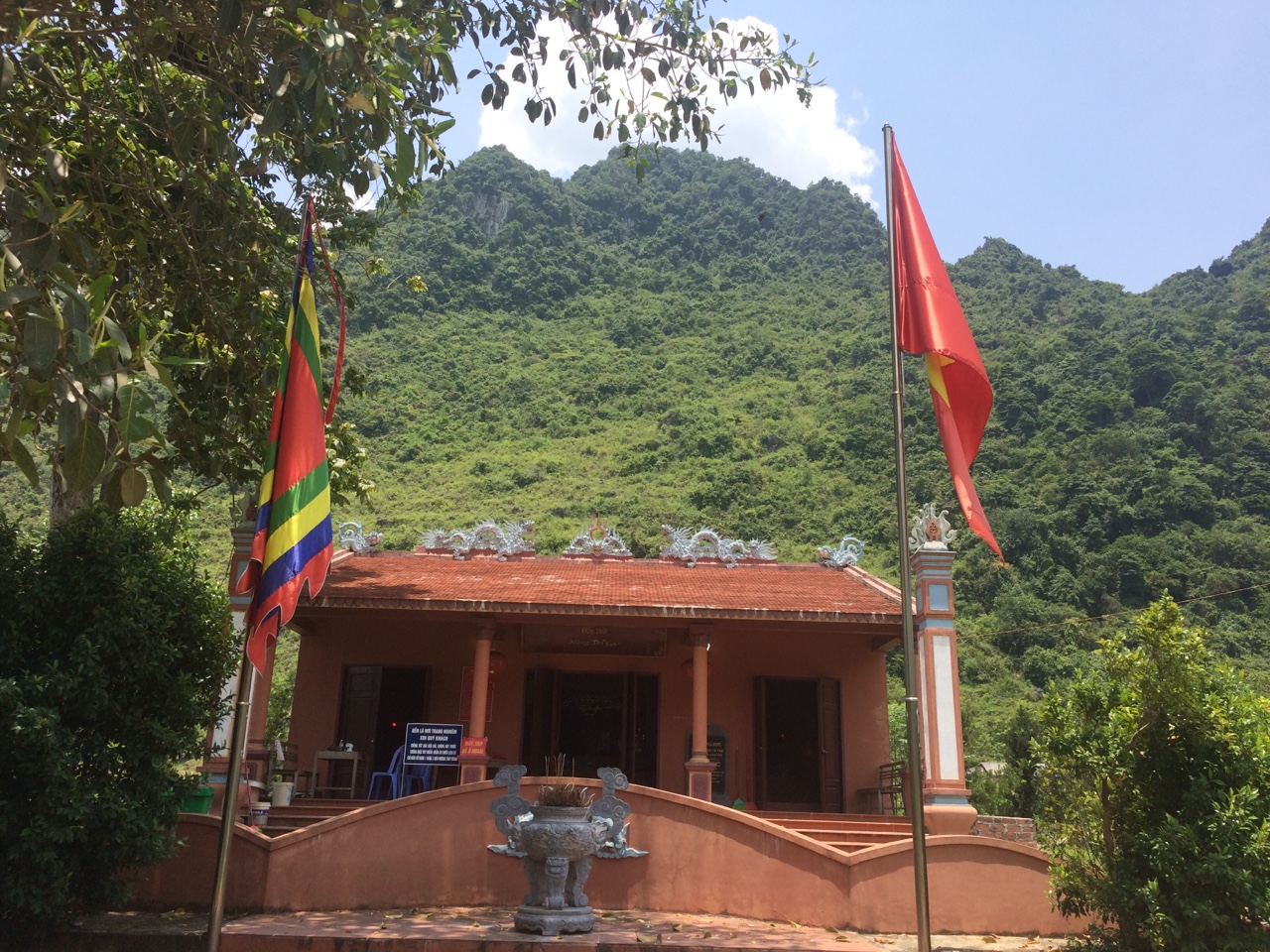NUNG TRI CAO TEMPLE

Throughout Cao Bang, Nung Tri Cao shrines or temples are established in many places in the districts of Hoa An, Ha Quang, Thong Nong, Quang Uyen etc. He is regarded as a hero, or a god of agriculture. On this route, tourists will visit Nung Tri Cao Temple in Coc Vuong locality, Soc Ha commune, Ha Quang district.
The Temple was built on top of a hill, backed by the solid Phja Ma mountain range, and facing the Ta Con River - an upstream tributary of the Bang River. According to the local people, the Phja Ma range looks like a horse heading toward the Temple; hence during worshiping the soul of Nung Tri Cao will ride a horse down to support and protect the local people.
Nung Tri Cao (1025-1053) represents the mind and power of upland ethnic people in their fight against the oppression of feudal domination. His image is deeply ingrained in the minds of the people not only in the provinces of Cao Bang, Lang Son, Ha Giang of Northeast Vietnam, but also in some other neighbouring countries such as China, Thailand and Myanmar. In 1041, Nung Chi Cao was appointed as the leader of Quang Nguyen (the present day Cao Bang) to manage a vast area and maintain peace for the people. In 1043, he was given the title of Thai Bao (one of the three highest positions of the Ly dynasty) and Do’s seal. He repeatedly led the fight against the Song army to protect the national border of the Dai Viet Kingdom. When he passed away in the battle, King Ly was greatly saddened, ordering that a temple be built in his honour, and appointed him as “Khau Sam Dai Vuong”. All later dynasties also venerated him, recognizing him as a hero who greatly contributed to national security, protecting people and the country.
The memorial day of Nung Tri Cao is on the 9th January lunar calendar year. This is also a festival day in Soc Giang (Ha Quang district).
Nung Tri Cao Temple was recognized as Provincial Historical Monument under Decision No. 2821/QĐ-UBND-VX dated December 12th 2011.
Reader Comments
Newer articles
Older articles


